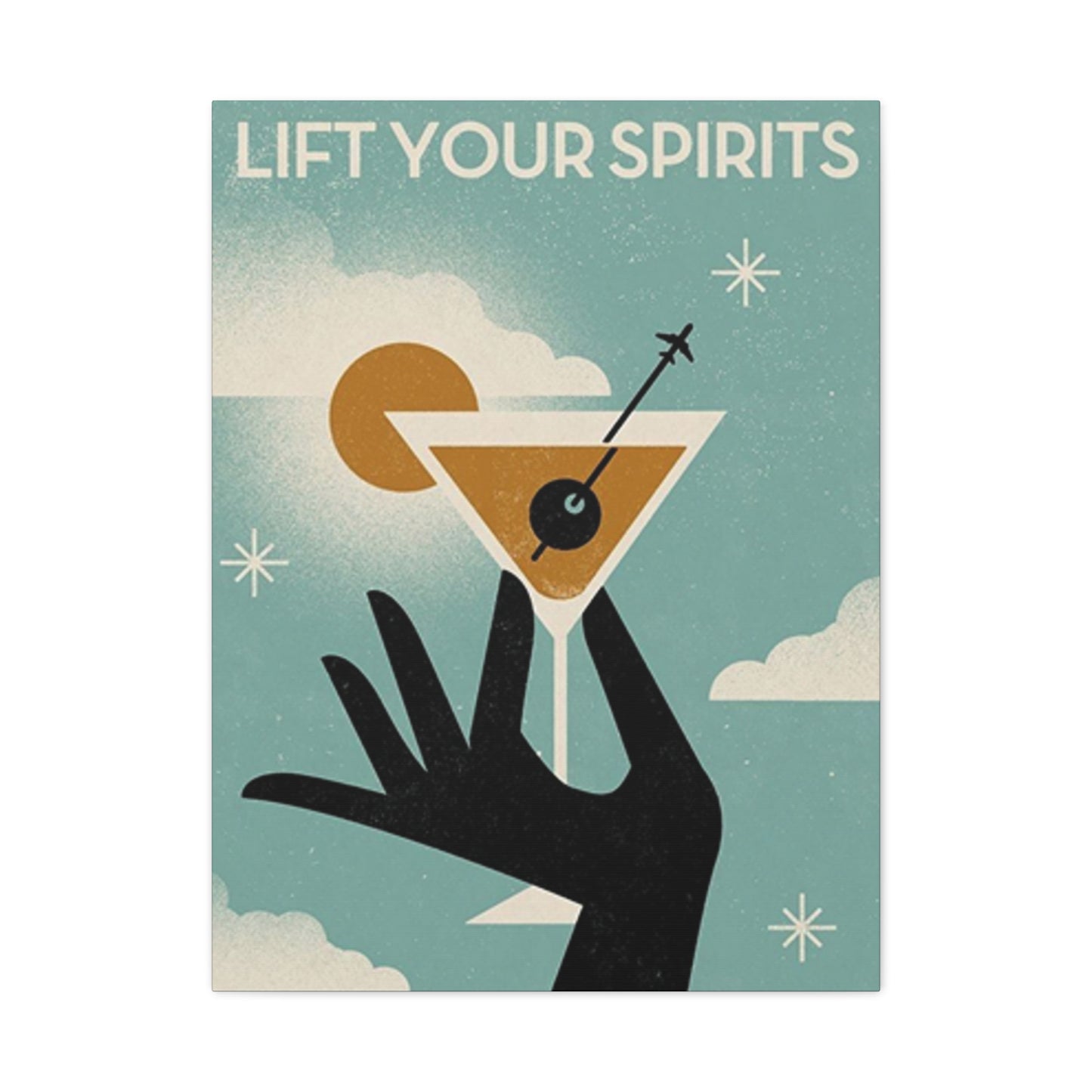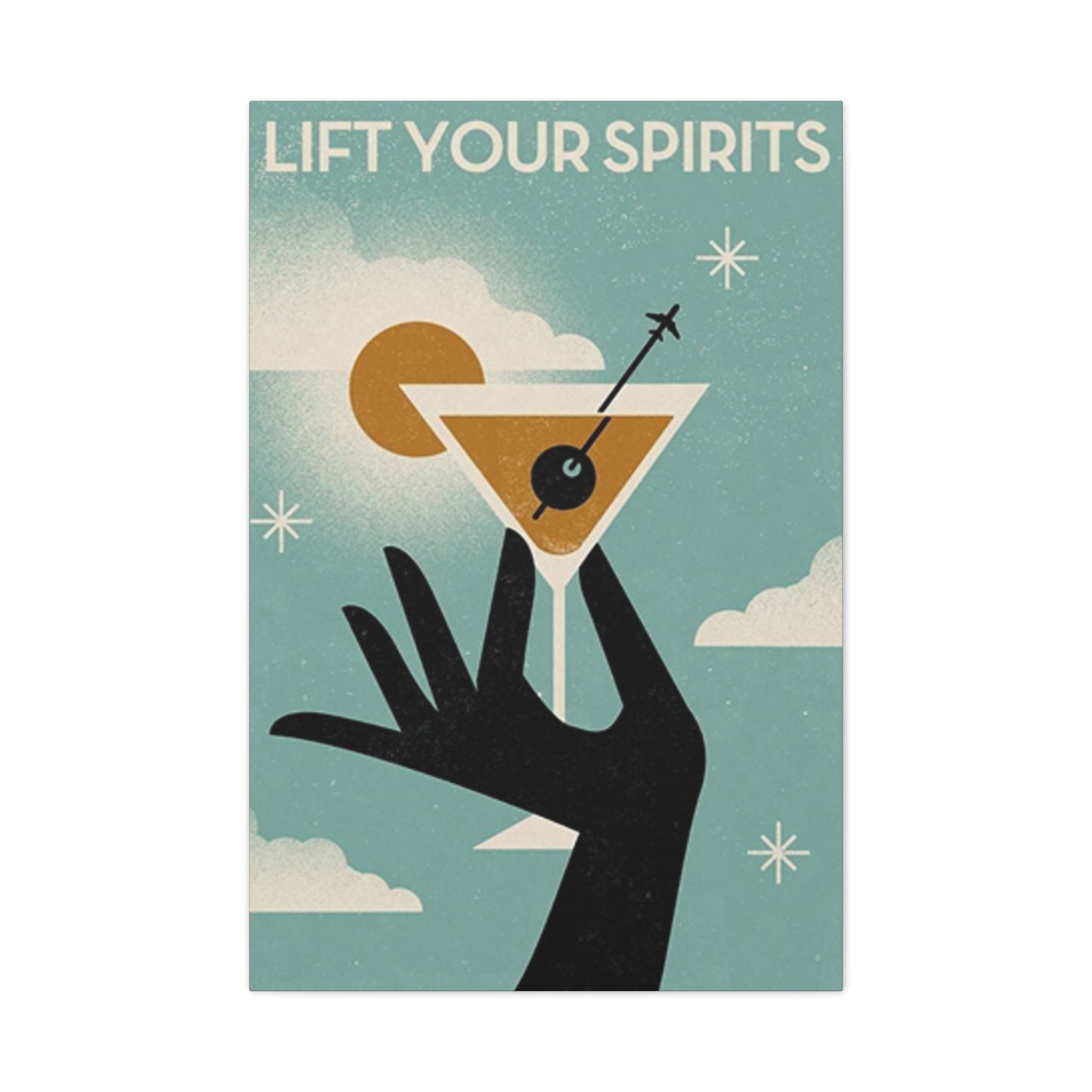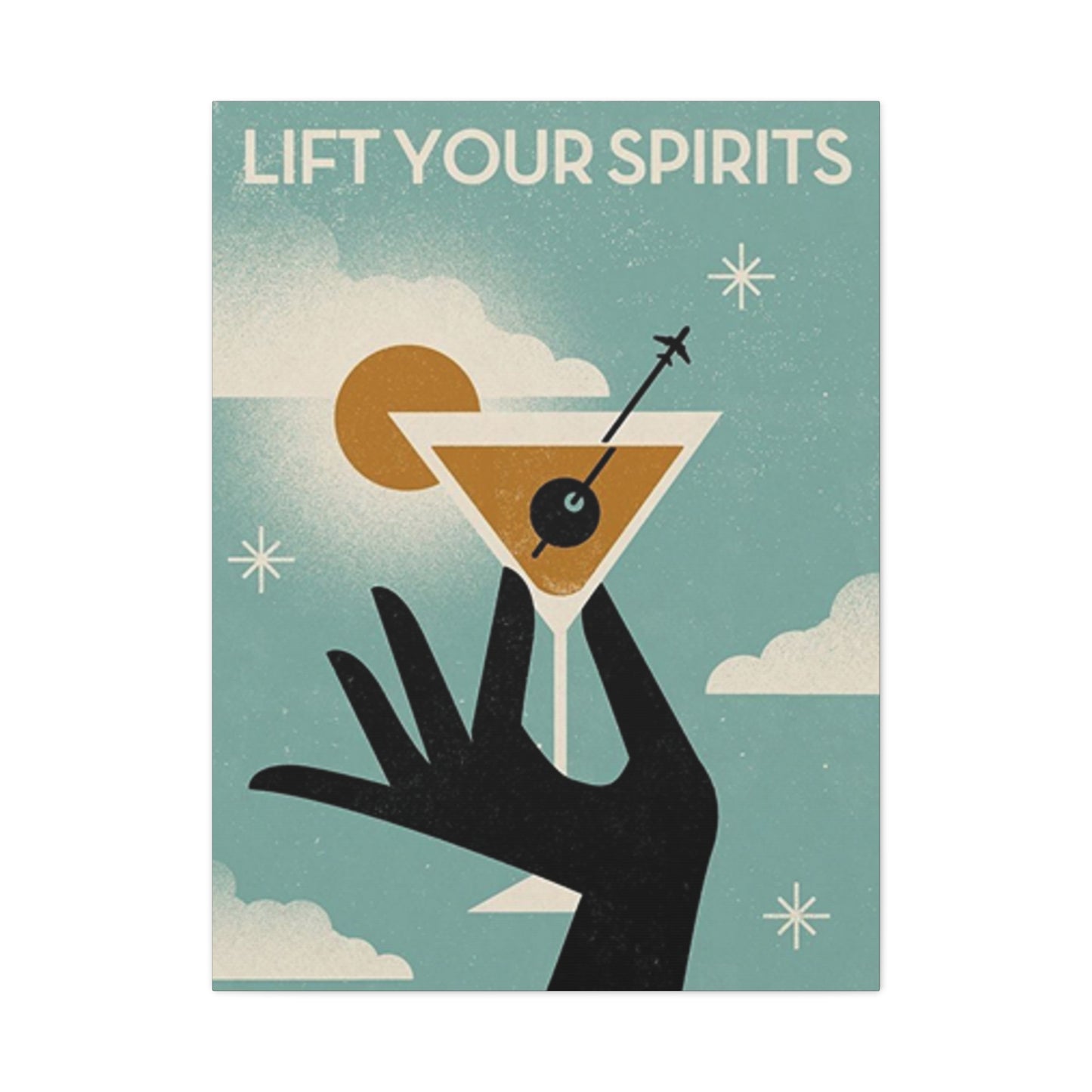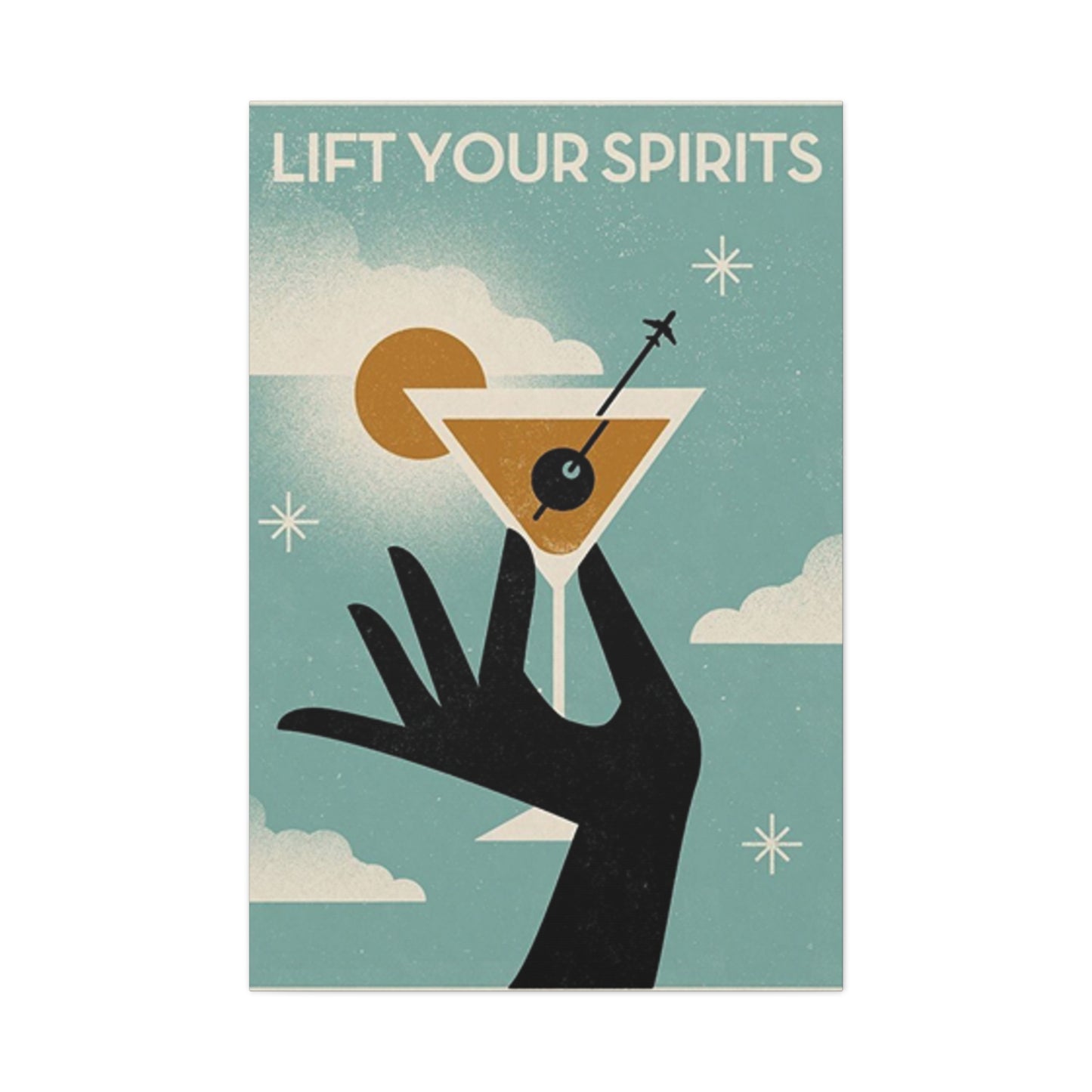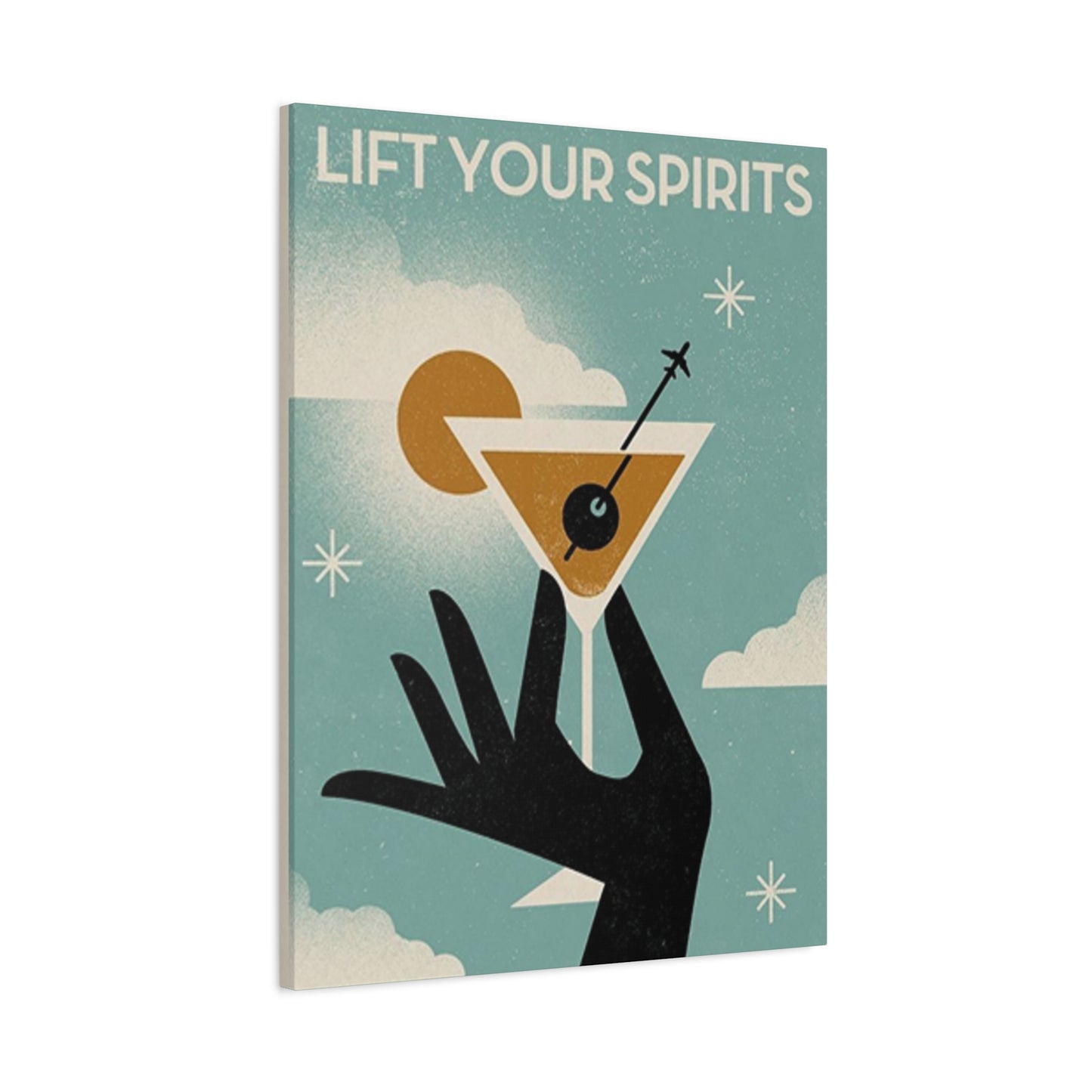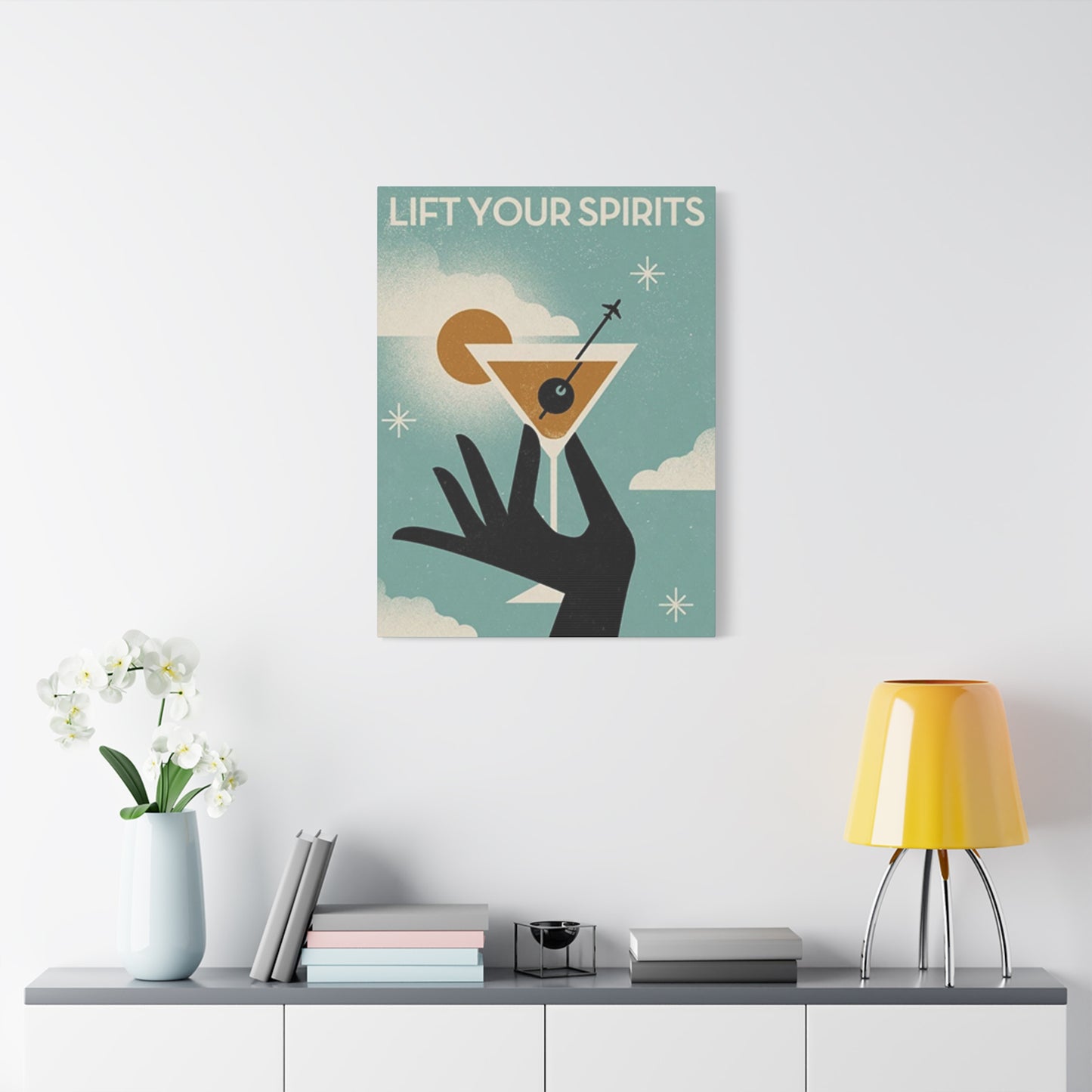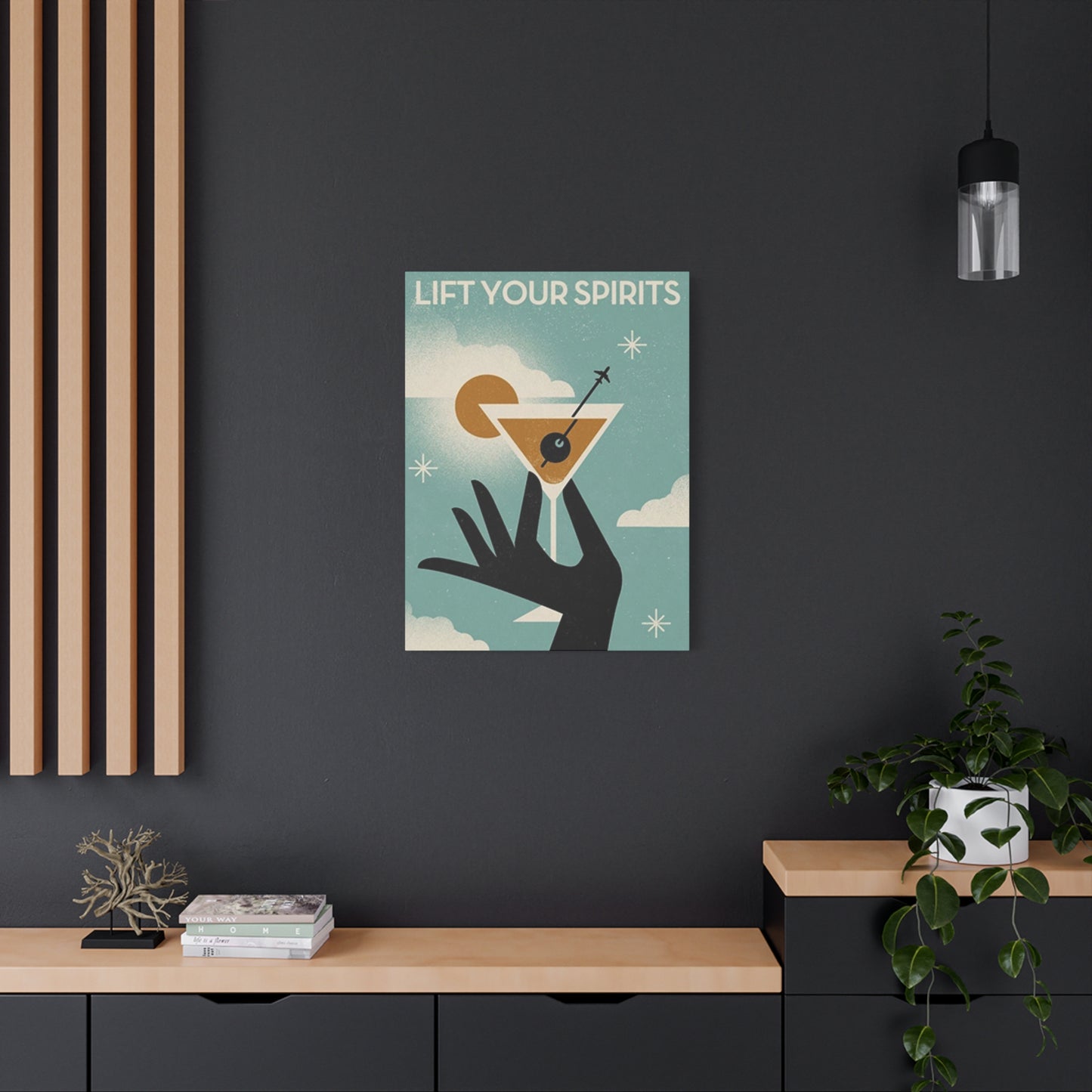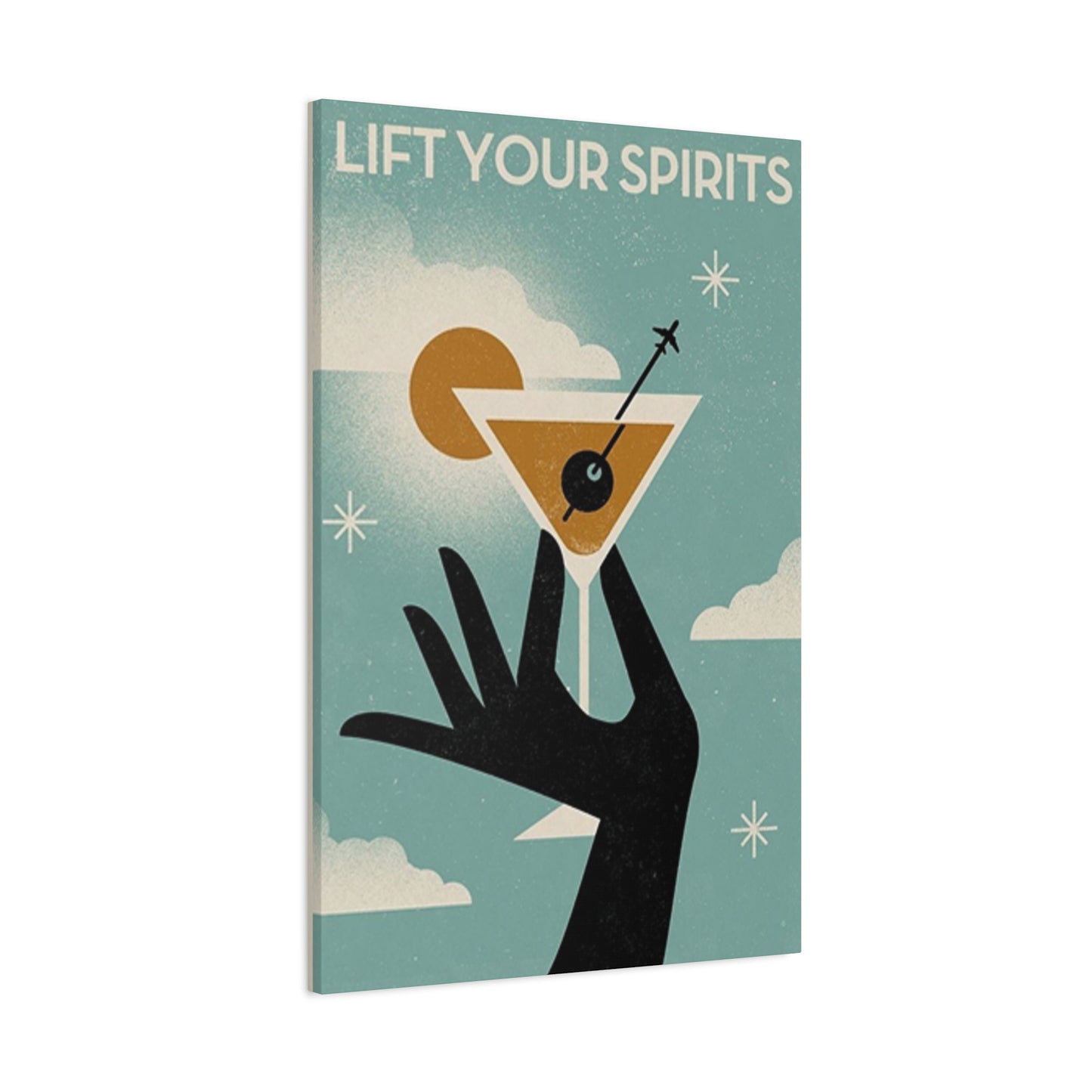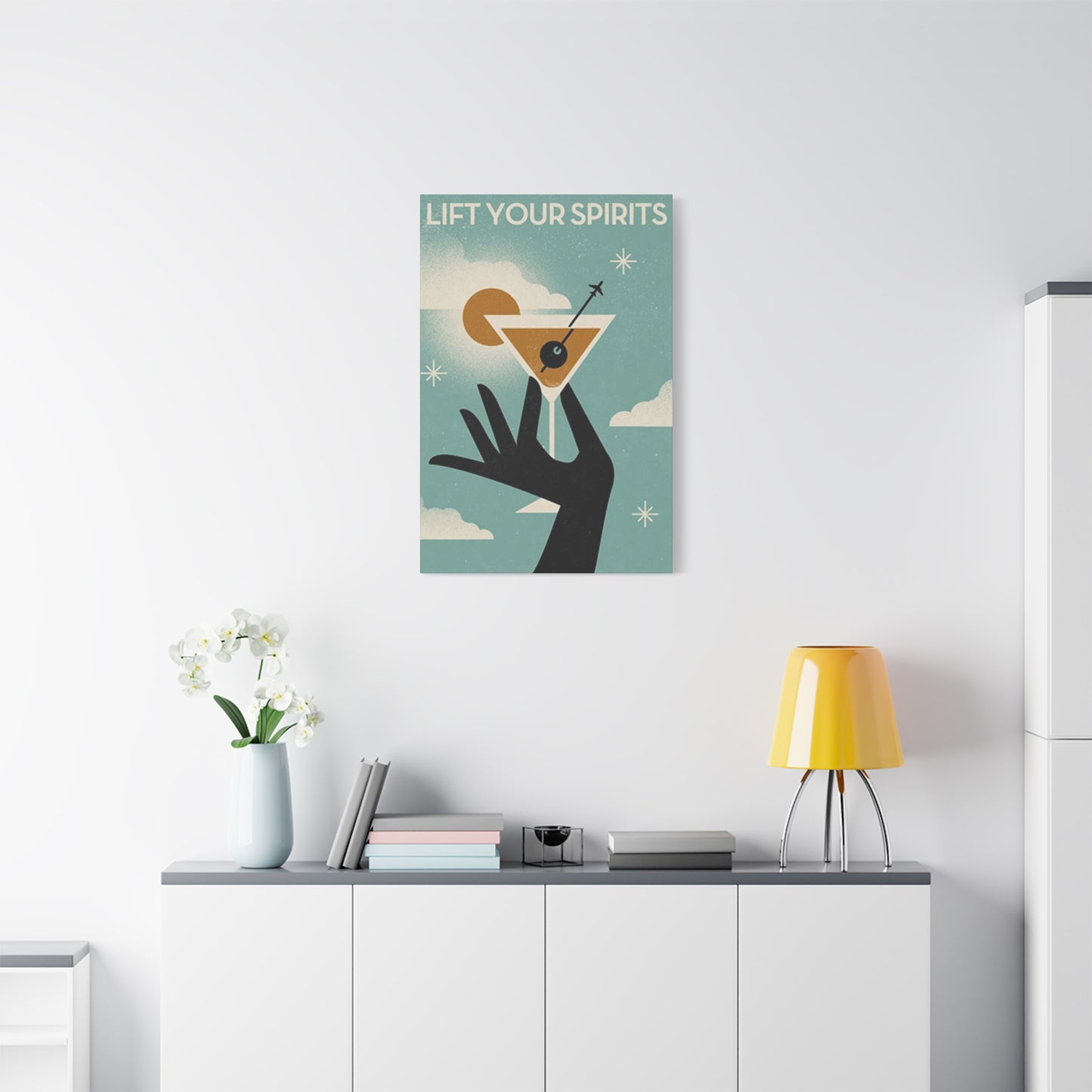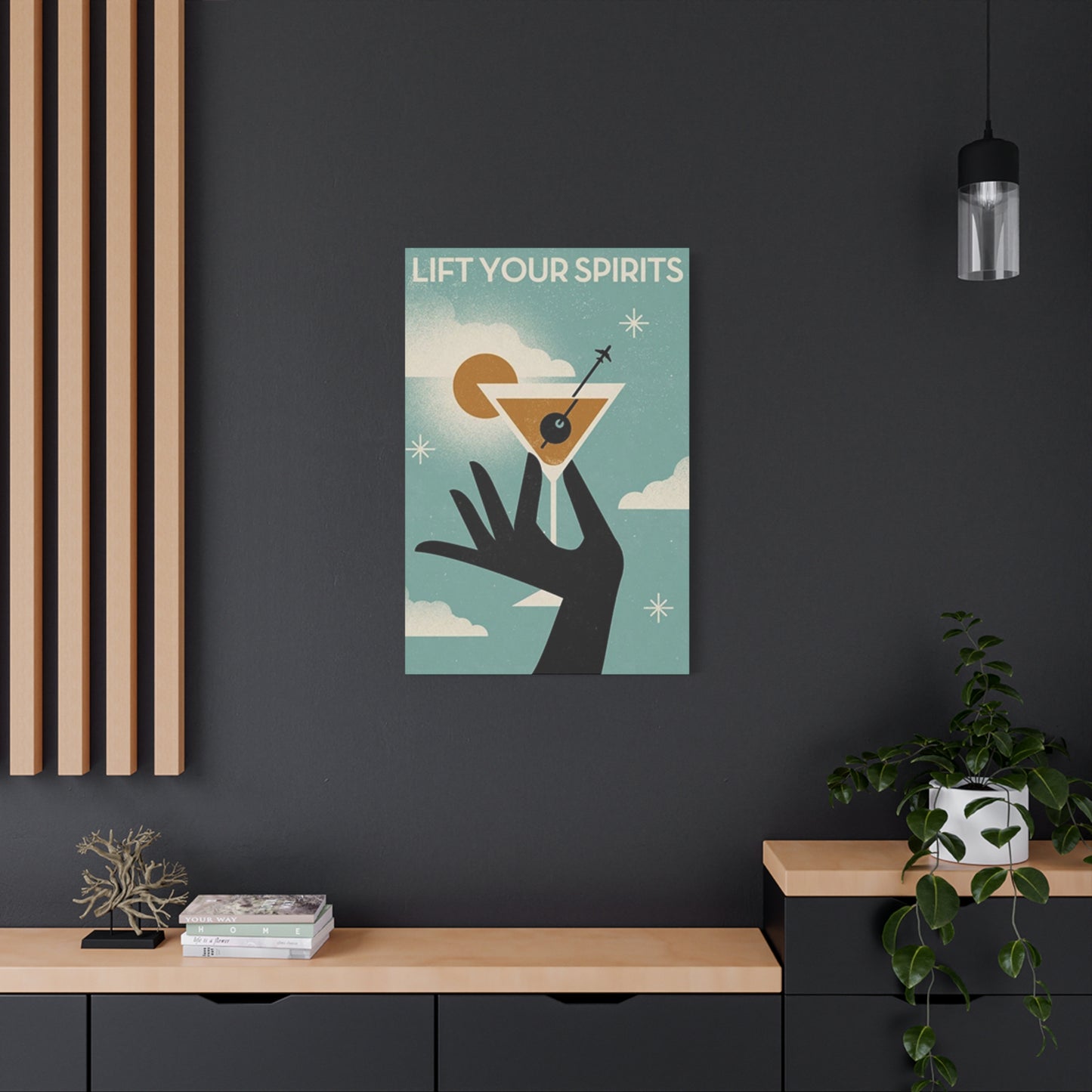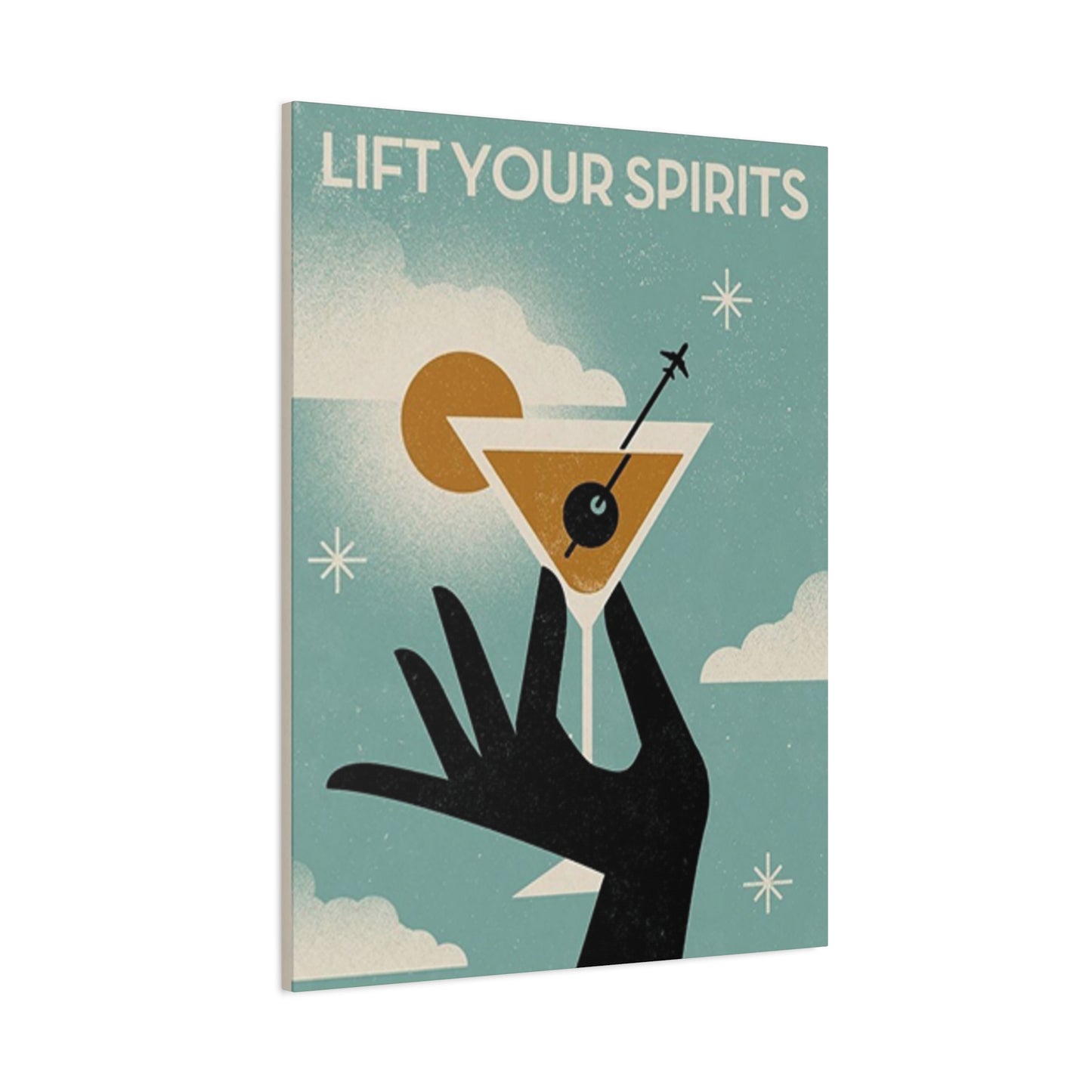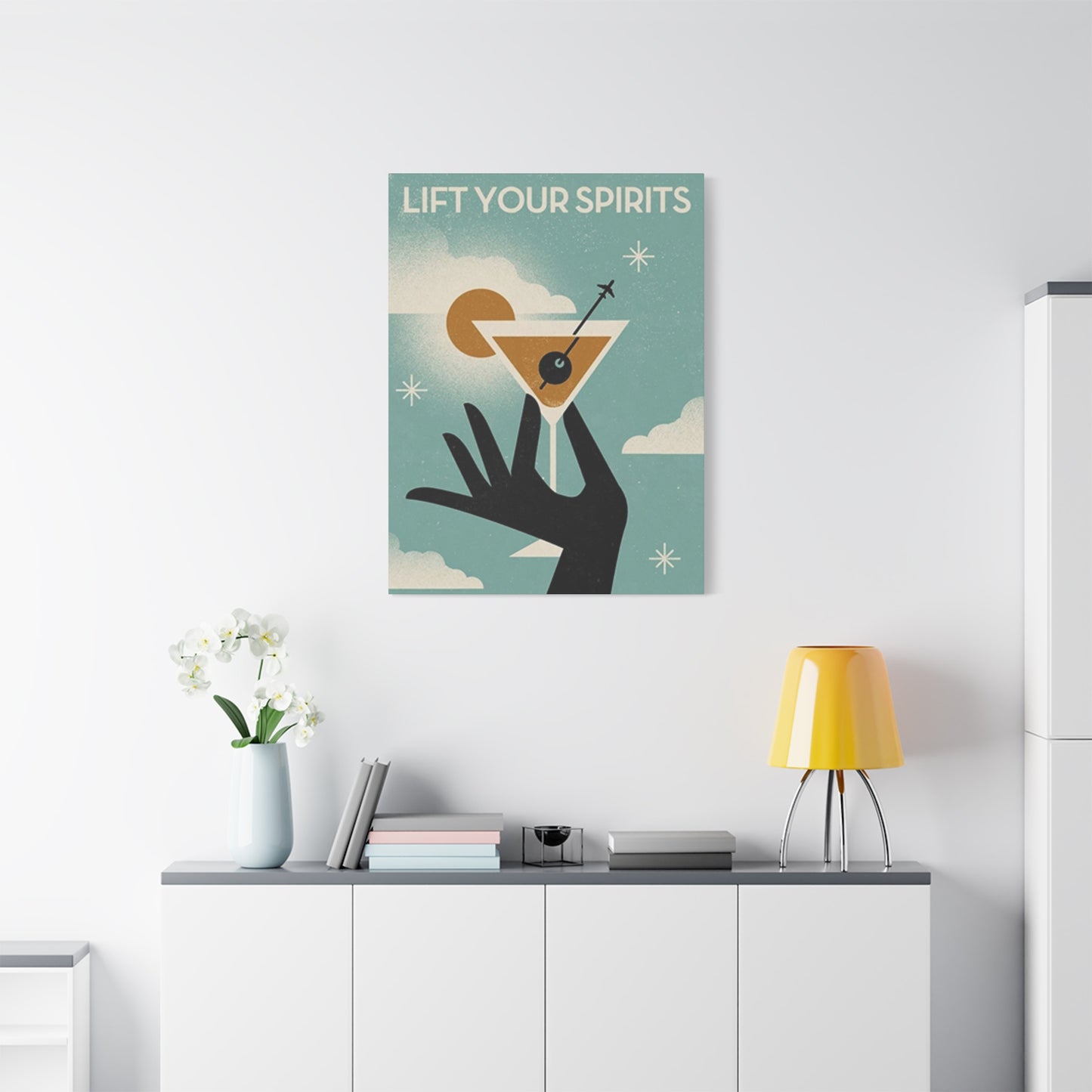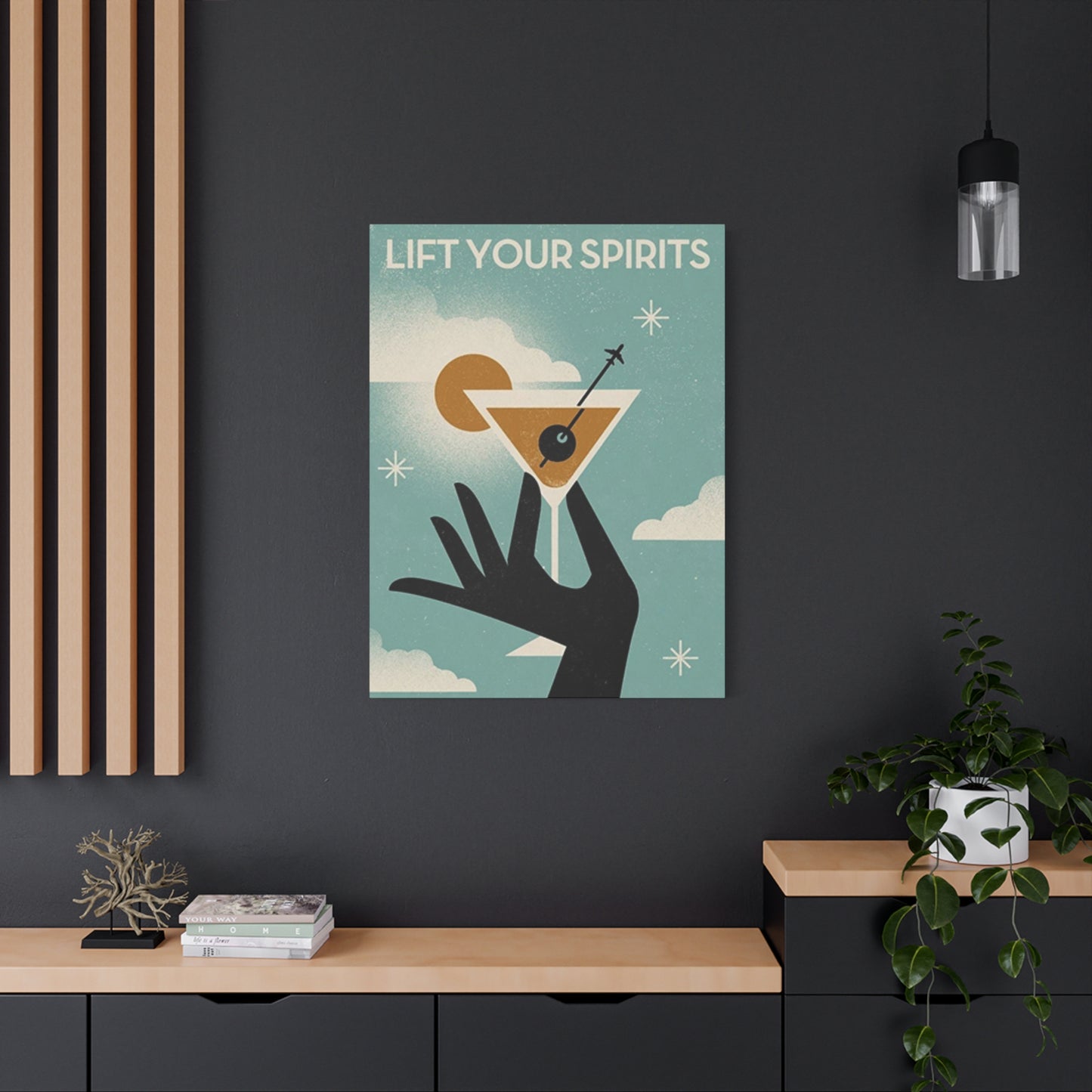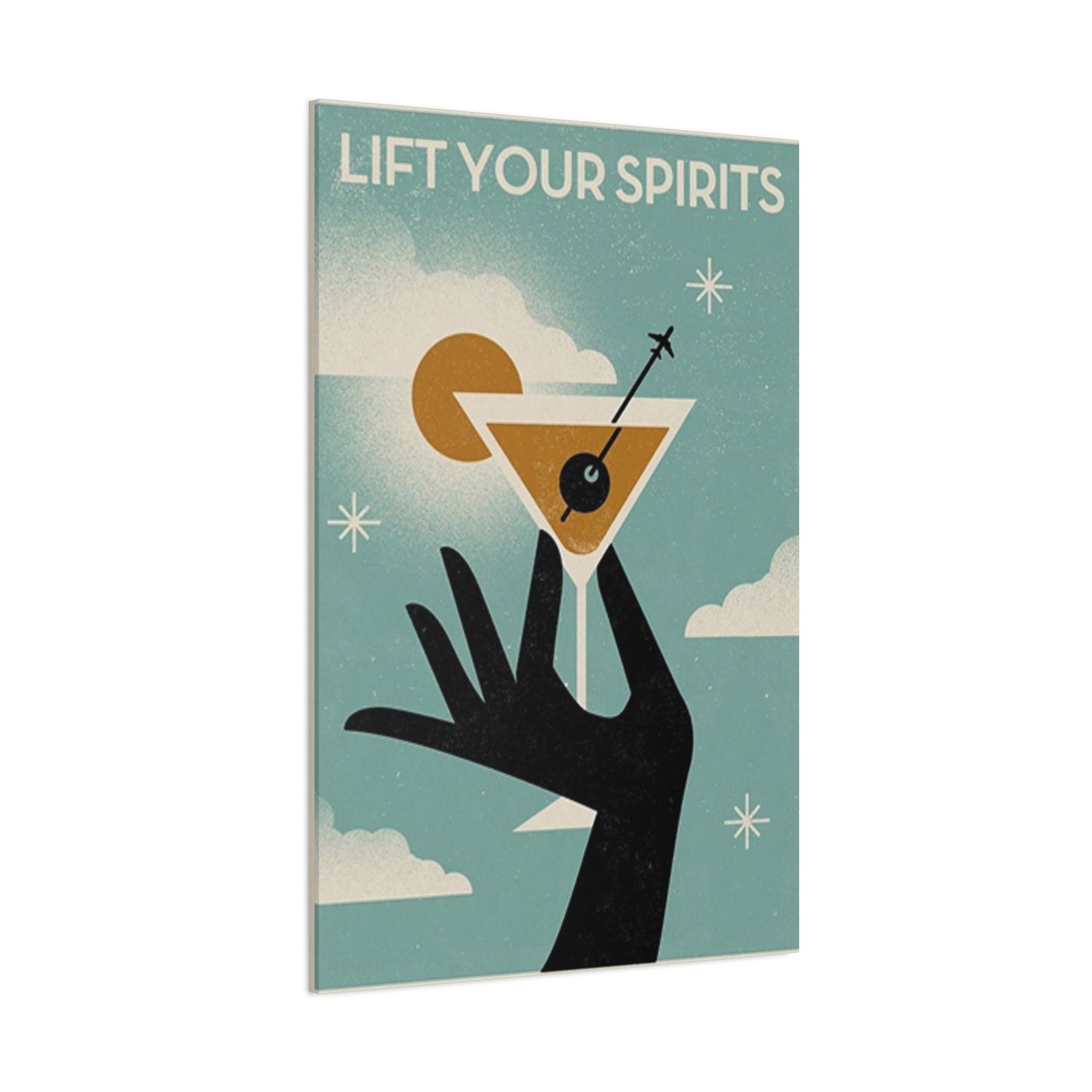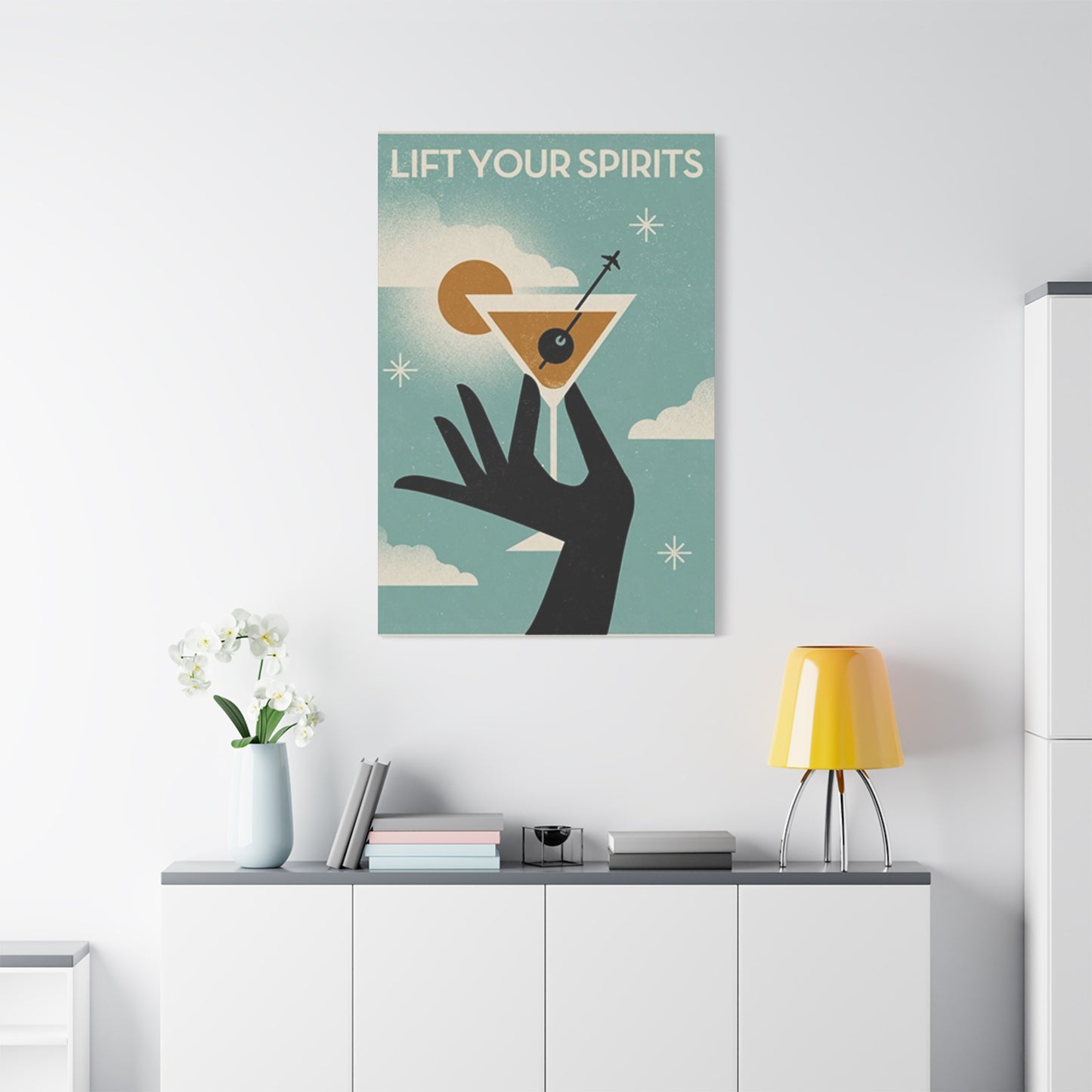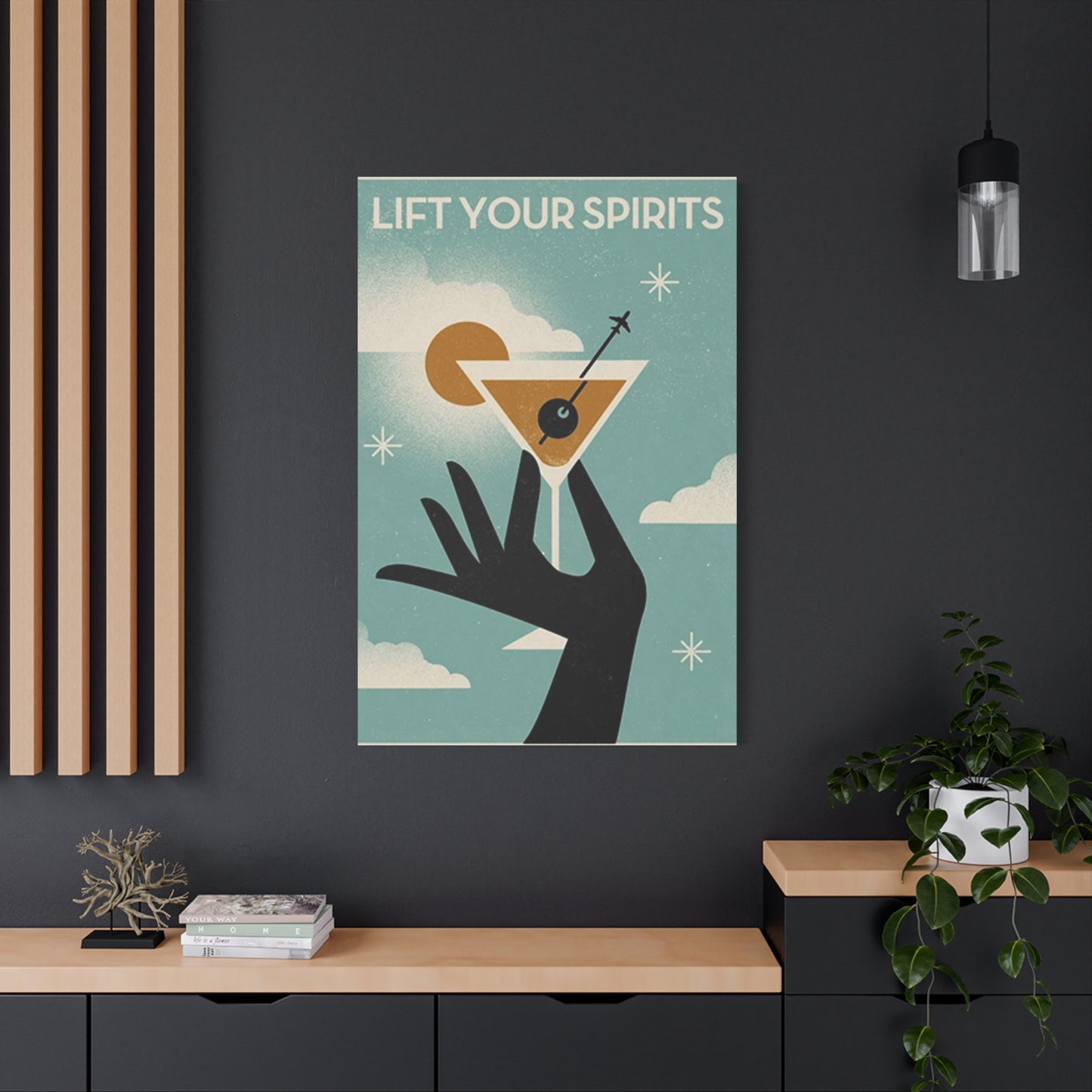Creating Seasonal ‘Lift Your Spirits’ Wall Art for Year-Round Motivation
The power of visual art to influence our emotional state and mental wellbeing cannot be overstated. In today's fast-paced world, where stress and negativity can easily overwhelm our daily experiences, the strategic placement of uplifting wall art in our living and working environments has become more important than ever. Canvas prints featuring motivational messages, inspiring quotes, and mood-boosting imagery serve as constant reminders of positivity, hope, and personal strength. These artistic elements transform ordinary rooms into sanctuaries of encouragement, fostering an atmosphere where creativity, productivity, and emotional healing can flourish.
The psychological impact of surrounding ourselves with positive visual stimuli extends far beyond mere decoration. Research in environmental psychology has consistently shown that our physical surroundings significantly influence our thoughts, emotions, and behaviors. When we intentionally curate our environments with artwork that speaks to our aspirations and values, we create a feedback loop of positivity that reinforces our commitment to personal growth and emotional wellness. This phenomenon makes the selection and placement of motivational canvas prints not just an aesthetic choice, but a deliberate investment in our mental health and daily happiness.
Enhancing Positivity with Canvas Print Collections
Canvas prints have revolutionized the way we approach home and office decoration, offering an accessible and impactful method for incorporating meaningful artwork into our daily environments. Unlike traditional paintings or photographs, canvas prints combine affordability with artistic quality, allowing individuals to create comprehensive collections of uplifting imagery without significant financial investment. The versatility of canvas as a medium enables the reproduction of various artistic styles, from photographic landscapes that evoke tranquility to bold typographic designs that deliver powerful motivational messages.
The process of selecting canvas prints for positivity enhancement requires thoughtful consideration of both personal preferences and psychological principles. Color psychology plays a crucial role in this selection process, as different hues can evoke distinct emotional responses. Warm colors like yellows, oranges, and soft reds tend to create feelings of energy, optimism, and comfort, while cool blues and greens promote calmness and mental clarity. The most effective uplifting canvas collections often incorporate a balanced palette that combines these elements, creating visual harmony while maximizing emotional impact.
When building a collection of motivational canvas prints, consider the narrative flow between pieces. Each artwork should contribute to an overall story of inspiration and growth, creating a cohesive visual journey that reinforces positive thinking throughout the day. This approach transforms random wall decorations into a curated experience that consistently supports mental wellness and personal development. The strategic placement of these prints in frequently visited areas ensures regular exposure to their uplifting messages, gradually embedding positive affirmations into daily routines.
Motivational Messages That Transform Living Environments
The incorporation of motivational wall art into residential settings has emerged as a powerful tool for creating environments that actively support personal growth and emotional resilience. These artistic elements serve multiple functions within the home, acting as daily reminders of personal goals, sources of inspiration during challenging times, and conversation starters that share positive energy with guests. The key to effectively utilizing motivational artwork lies in selecting pieces that resonate with individual values and aspirations while maintaining visual appeal and artistic integrity.
Typography-based motivational prints offer particular advantages in home settings, as they can deliver specific messages tailored to different areas and functions within the residence. Kitchen artwork might feature messages about nourishment and gratitude, while bedroom pieces could focus on rest, dreams, and new beginnings. Living rooms benefit from broader inspirational themes that welcome guests and create an atmosphere of warmth and positivity. This targeted approach ensures that motivational messages remain relevant and impactful rather than becoming background noise that loses effectiveness over time.
The psychological impact of motivational home decor extends to family dynamics and social interactions. When children grow up surrounded by positive visual messages, they internalize these concepts more naturally, developing stronger emotional intelligence and resilience. Adult family members benefit from the constant reinforcement of shared values and goals, creating a supportive environment where personal growth is encouraged and celebrated. Guests often comment on the positive atmosphere in homes featuring thoughtful motivational artwork, indicating the broader social impact of these design choices.
Creating themed vignettes with motivational artwork allows for more sophisticated and impactful displays. Rather than randomly placing individual pieces, grouping related artworks creates focal points that command attention and deliver more powerful messages. These collections might explore themes like gratitude, perseverance, creativity, or personal empowerment, with each piece contributing to a comprehensive exploration of the chosen concept. The visual weight and narrative coherence of themed displays make them more memorable and emotionally engaging than scattered individual pieces.
Vibrant Color Palettes for Emotional Upliftment
Color psychology forms the foundation of effective mood-enhancing artwork, with specific hues demonstrably influencing emotional states and mental clarity. The strategic use of vibrant, life-affirming colors in canvas prints can dramatically alter the energy of any room, transforming dull or stressful environments into vibrant sanctuaries of positivity. Understanding the emotional associations of different colors enables more informed choices when selecting artwork for specific therapeutic or motivational purposes.
Yellow, often called the happiest color, naturally draws attention and evokes feelings of joy, optimism, and mental stimulation. Canvas prints featuring various shades of yellow, from soft butter tones to brilliant sunflower hues, can instantly brighten both the physical appearance of a room and the mood of its occupants. The warmth of yellow creates welcoming environments while stimulating creativity and intellectual engagement, making it particularly effective in home offices, creative studios, and social gathering areas.
Orange combines the energy of red with the happiness of yellow, creating a color that promotes enthusiasm, creativity, and social interaction. Artwork featuring orange tones can energize tired environments and encourage more active, engaged lifestyles. The versatility of orange allows for subtle peach accents that add warmth without overwhelming, or bold tangerine statements that command attention and inspire action. This color works particularly well in exercise areas, creative workrooms, and social gathering points where energy and enthusiasm are desired.
Green, representing nature, growth, and renewal, provides emotional balance and promotes feelings of harmony and stability. Canvas prints incorporating various shades of green can reduce eye strain, lower blood pressure, and create calming environments that support both relaxation and focused concentration. The psychological association of green with natural growth makes it particularly effective in artwork focused on personal development and goal achievement. Sage greens promote wisdom and contemplation, while vibrant emerald tones suggest abundance and prosperity.
Blue, universally associated with peace, trust, and stability, offers profound psychological benefits when incorporated into motivational artwork. Light blues promote feelings of tranquility and open communication, while deeper navy tones suggest professionalism and reliability. The calming effects of blue make it particularly valuable in high-stress environments or areas designated for reflection and meditation. However, the specific shade selection is crucial, as overly cool or dark blues can sometimes evoke feelings of sadness or isolation.
Purple, long associated with creativity, luxury, and spiritual awareness, adds depth and sophistication to motivational artwork collections. The combination of calming blue and energizing red creates a color that stimulates imagination while promoting emotional balance. Lighter lavender shades evoke gentleness and feminine energy, while deeper violet tones suggest mystery and transformation. Purple works particularly well in creative environments and personal reflection areas where spiritual growth and artistic expression are valued.
Creating Positive Atmospheres Through Strategic Canvas Placement
The strategic placement of uplifting canvas prints requires careful consideration of traffic patterns, lighting conditions, and functional requirements within each environment. Effective placement ensures maximum visibility and impact while maintaining aesthetic balance and avoiding visual overwhelm. The goal is to create a natural flow of positive reinforcement throughout the day, with meaningful artwork positioned where it will be encountered during routine activities and transitions.
Entry areas, including foyers, hallways, and doorways, present prime opportunities for impactful motivational artwork. These transitional zones set the tone for entire environments, making them ideal locations for welcome messages, daily affirmations, or inspiring quotes that prepare visitors and residents for positive experiences. The artwork in these areas should be immediately visible and emotionally engaging, creating strong first impressions that influence subsequent interactions and activities.
Living areas benefit from artwork that encourages social interaction, family bonding, and relaxation. The scale and placement of motivational prints in these environments should complement existing furniture arrangements while creating focal points that draw people together. Large statement pieces can anchor seating areas, while smaller coordinating prints can create visual rhythm and reinforce central themes throughout the room. The messages in living area artwork should be universally appealing and appropriate for diverse audiences.
Bedroom artwork serves more intimate functions, supporting personal reflection, goal visualization, and emotional processing. The placement of motivational prints in sleeping areas should consider both waking and resting activities, ensuring that positive messages are visible during morning routines while maintaining a calming atmosphere conducive to restful sleep. Artwork positioned opposite the bed creates natural focal points for morning meditation or evening reflection, while pieces near dressing areas can provide daily inspiration during preparation routines.
Kitchen and dining areas offer unique opportunities for artwork focused on nourishment, gratitude, and family connection. These high-activity zones benefit from easily readable messages that can be absorbed quickly during meal preparation and consumption. The placement of motivational artwork in dining areas should enhance social interaction while reinforcing positive family values and healthy lifestyle choices. Durability considerations are important in these environments due to humidity, temperature fluctuations, and potential splashing.
Home office and study areas require artwork that balances motivation with concentration, providing inspiration without creating distraction. The placement of career-focused or achievement-oriented prints should support productivity while maintaining visual calm. Positioning motivational artwork within the natural sight lines from work positions ensures regular exposure to encouraging messages without interrupting focused activities. The scale and color intensity of office artwork should complement the need for sustained concentration and professional atmosphere.
Professional Environments and Workplace Inspiration
The integration of motivational wall art into professional environments has gained significant recognition as a strategy for improving employee morale, productivity, and overall workplace satisfaction. Unlike residential applications where personal preference dominates selection criteria, workplace artwork must balance individual inspiration with organizational culture, professional appropriateness, and diverse audience appeal. The careful curation of office artwork can transform sterile corporate environments into spaces that actively support employee wellbeing and professional development.
Reception areas and common spaces in professional environments benefit from artwork that communicates organizational values while creating welcoming atmospheres for both employees and visitors. The selection of motivational prints for these areas should reflect company culture and mission while appealing to broad audiences with diverse backgrounds and perspectives. Messages focusing on teamwork, innovation, excellence, and growth tend to be most effective in these applications, as they align with common business objectives while inspiring individual contributors.
Individual office environments allow for more personalized approaches to motivational artwork while maintaining professional standards. The selection of prints for private offices should consider both the occupant's role and personality, creating environments that support specific job functions while reflecting personal values and aspirations. Leadership positions might benefit from artwork emphasizing vision, decision-making, and responsibility, while creative roles could incorporate pieces that stimulate innovation and artistic thinking.
Conference rooms and meeting areas require artwork that facilitates collaboration while maintaining professional focus. The motivational messages in these environments should emphasize teamwork, communication, and shared success, creating atmospheres that encourage productive discussions and creative problem-solving. The scale and placement of artwork in meeting areas must consider sight lines from various seating positions while avoiding elements that might compete with presentation materials or technology displays.
Break rooms and casual areas within professional environments offer opportunities for more relaxed and personally engaging motivational artwork. These zones can accommodate pieces that promote work-life balance, stress relief, and personal wellbeing, providing mental refreshment during busy workdays. The informal nature of break areas allows for more colorful and playful artwork that might be inappropriate in formal business settings while still maintaining messages that support overall workplace positivity.
The psychological benefits of workplace motivational artwork extend beyond individual employee satisfaction to influence team dynamics, client relationships, and organizational reputation. Environments that clearly demonstrate investment in employee wellbeing and positive culture tend to attract higher-quality talent and generate more positive client interactions. The visual communication of organizational values through carefully selected artwork can reinforce training initiatives and company messaging while creating more memorable and distinctive workplace experiences.
Artistic Styles for Mood Enhancement
The artistic style of motivational wall art significantly influences its emotional impact and effectiveness in different environments. Contemporary minimalist approaches emphasize clean lines, simple compositions, and bold typography, creating artwork that delivers clear messages without visual clutter. This style works particularly well in modern environments where simplicity and clarity are valued, allowing motivational messages to stand out against neutral backgrounds and architectural elements.
Abstract expressionist approaches to motivational artwork combine emotional color palettes with gestural brushwork to create pieces that evoke feelings rather than literal meanings. These artworks work on subconscious levels, using color, texture, and composition to influence mood and energy without explicit verbal messages. Abstract motivational pieces are particularly effective in environments where subtlety is preferred or where diverse audiences might interpret explicit messages differently.
Photographic motivational artwork incorporates inspirational landscapes, nature scenes, or human achievement imagery with overlaid text or integrated messaging. This approach combines the emotional impact of beautiful imagery with specific motivational content, creating multi-layered experiences that engage both visual and intellectual responses. Photographic pieces work particularly well in environments where natural beauty is valued or where specific achievements or destinations are being celebrated.
Typography-focused artwork emphasizes the visual presentation of words and phrases, using font selection, layout, and color to enhance the emotional impact of motivational messages. This style allows for precise control over messaging while creating visually striking compositions that function effectively as both art and communication. Typography-based pieces work well in professional environments and modern residential settings where clear communication is valued.
Mixed media approaches combine multiple artistic techniques and materials to create unique motivational pieces that cannot be easily categorized. These artworks might incorporate collage elements, textural components, or digital effects to create distinctive visual experiences that support motivational messaging. Mixed media pieces often work well as conversation starters and focal points in creative or eclectic environments.
Vintage and retro styling applies period-appropriate design elements to contemporary motivational messages, creating artwork that combines nostalgic appeal with modern inspiration. This approach can be particularly effective in environments where historical references are appreciated or where the contrast between old and new creates interesting visual tensions. Vintage-styled motivational artwork often incorporates classic advertising design elements or traditional printing techniques.
Therapeutic Benefits of Inspirational Visual Art
The therapeutic applications of motivational wall art extend far beyond simple decoration, encompassing evidence-based approaches to mental health support and emotional healing. Art therapy principles demonstrate that visual stimuli can significantly influence psychological states, stress levels, and recovery processes. The strategic incorporation of inspirational artwork into therapeutic environments, recovery areas, and wellness-focused settings provides continuous support for individuals working through various mental health challenges.
Anxiety reduction represents one of the most documented benefits of positive visual art in therapeutic applications. Artwork featuring calming imagery, reassuring messages, and soothing color palettes can help regulate nervous system responses and promote feelings of safety and stability. The consistent exposure to anxiety-reducing artwork creates environmental support that complements other therapeutic interventions while providing 24-hour availability of visual comfort and reassurance.
Depression management benefits significantly from artwork that challenges negative thought patterns and provides alternative perspectives on life experiences. Motivational pieces that emphasize hope, personal strength, and future possibilities can serve as cognitive anchors during difficult emotional periods. The visual reinforcement of positive concepts helps counteract the tendency toward negative rumination that characterizes depressive episodes, providing readily accessible reminders of personal worth and potential.
Stress management applications of motivational artwork focus on pieces that promote relaxation, perspective-taking, and emotional regulation. Artwork incorporating stress-reduction imagery, mindfulness concepts, or peaceful natural scenes can help create micro-environments within stressful settings that provide brief respites from tension and pressure. The accessibility of visual stress relief makes this approach particularly valuable in high-pressure professional environments or caregiving situations.
Self-esteem building through inspirational artwork addresses fundamental psychological needs for validation, recognition, and personal worth. Pieces that celebrate individual uniqueness, personal growth, and inherent value can provide consistent reinforcement of positive self-concept development. This application is particularly valuable in environments serving vulnerable populations, including addiction recovery centers, domestic violence shelters, and youth development programs.
Motivation and goal-achievement support through visual art helps individuals maintain focus on long-term objectives while navigating daily challenges and setbacks. Artwork that visualizes success, celebrates progress, and reinforces commitment can provide crucial psychological support during difficult periods of personal development. The environmental reinforcement of goal-oriented thinking helps maintain momentum when internal motivation wavers.
Recovery environments benefit from artwork that supports healing processes while acknowledging the challenges of personal transformation. Pieces that balance realism about difficulties with hope for positive outcomes create supportive atmospheres that neither minimize struggles nor discourage progress. This balanced approach helps individuals maintain perspective during recovery while building confidence in their ability to achieve lasting change.
Personalization Strategies for Maximum Impact
The effectiveness of motivational wall art depends largely on its personal relevance to the individuals who encounter it daily. Generic inspirational messages may provide some benefit, but personalized selections that align with individual values, goals, and life experiences create significantly stronger emotional connections and behavioral influence. The process of personalizing motivational artwork requires careful consideration of personality types, life circumstances, and specific areas where encouragement or support is most needed.
Personality-based selection considers how different individual temperaments respond to various types of motivational messaging. Introverted individuals might benefit from artwork emphasizing inner strength, reflection, and personal growth, while extroverted personalities could respond better to pieces celebrating social connection, shared achievement, and community impact. The visual style preferences also correlate with personality traits, with some individuals drawn to bold, dramatic pieces while others prefer subtle, contemplative artwork.
Life stage considerations influence the most effective types of motivational artwork for different age groups and developmental phases. Young adults might benefit from career-focused messaging and adventure-themed imagery, while established professionals could respond better to pieces emphasizing leadership, legacy, and work-life balance. Retirement-age individuals often connect with artwork celebrating wisdom, relationships, and life reflection, while families with children benefit from pieces that reinforce positive parenting values and household harmony.
Cultural background and religious beliefs significantly influence the interpretation and effectiveness of motivational artwork. Pieces that incorporate culturally relevant imagery, symbols, or language create stronger connections with individuals from specific backgrounds while potentially alienating those from different traditions. The selection process should consider the cultural diversity of the environment while identifying universal themes that resonate across different backgrounds.
Current life challenges and personal goals provide opportunities for highly targeted motivational artwork that addresses specific areas of need or growth. Individuals working through health challenges might benefit from pieces emphasizing resilience and healing, while those pursuing educational goals could respond to artwork celebrating learning and intellectual growth. The dynamic nature of personal circumstances suggests that motivational artwork collections should evolve over time to remain relevant and impactful.
Professional aspirations and career development provide another lens for personalizing motivational artwork selections. Pieces that visualize career success, professional growth, or industry-specific achievements can provide daily reinforcement of professional goals while maintaining inspiration during challenging career periods. The specificity of career-focused artwork can make it particularly powerful for individuals with clear professional objectives.
Relationship goals and family dynamics influence the selection of artwork that supports interpersonal harmony and social connection. Couples might benefit from pieces that celebrate partnership and shared dreams, while families could respond to artwork that reinforces positive parenting approaches and household values. Single individuals might connect with pieces emphasizing self-love, personal independence, and social contribution.
Color Psychology in Uplifting Artwork
The scientific study of color psychology provides valuable insights into how different hues influence human emotions, behaviors, and physiological responses. This understanding enables more strategic selection of motivational artwork that maximizes positive psychological impact while avoiding colors that might inadvertently trigger negative associations or uncomfortable responses. The application of color psychology principles to motivational wall art creates more effective and therapeutically sound environmental modifications.
Warm color families, including reds, oranges, and yellows, generally create feelings of energy, comfort, and social connection. These hues tend to advance visually, making them effective attention-grabbers and focal points within room compositions. Red specifically increases heart rate and blood pressure while promoting feelings of excitement and urgency, making it valuable in artwork designed to motivate action or energize inactive individuals. However, excessive red can also create feelings of aggression or anxiety, suggesting the need for balanced application in motivational contexts.
Orange combines the passion of red with the happiness of yellow, creating a color that promotes enthusiasm without the intensity that might overwhelm sensitive individuals. This hue encourages social interaction and creative expression while maintaining approachability and warmth. Orange-dominant artwork works particularly well in social gathering areas and creative workrooms where collaboration and innovation are valued. The playfulness associated with orange makes it effective in environments serving children and young adults.
Yellow, associated with sunshine and happiness, naturally elevates mood and promotes optimism while stimulating mental activity and clarity. However, the specific shade of yellow significantly influences its psychological impact, with bright yellows potentially causing eye strain or agitation in large quantities, while softer yellow tones create more sustainable positive effects. Golden yellows suggest prosperity and achievement, while pale yellows promote gentleness and nurturing feelings.
Cool color families, including blues, greens, and purples, generally promote calm, contemplation, and emotional stability. These hues tend to recede visually, making them effective background colors that support rather than compete with other design elements. Blue specifically lowers blood pressure and heart rate while promoting feelings of trust and reliability, making it valuable in artwork designed to reduce anxiety or create peaceful environments. However, excessive blue can sometimes evoke feelings of sadness or isolation, particularly in individuals already struggling with depression.
Green, representing nature and growth, provides emotional balance while reducing eye strain and promoting physical relaxation. This color suggests harmony, renewal, and abundance, making it effective in artwork focused on personal growth and goal achievement. The wide range of green tones available allows for subtle variations in psychological impact, from energizing lime greens that promote action to calming sage greens that encourage reflection and wisdom.
Purple, combining the stability of blue with the energy of red, creates a sophisticated color associated with creativity, luxury, and spiritual awareness. This hue can stimulate imagination while promoting emotional balance, making it valuable in artwork designed to inspire creative thinking or spiritual growth. However, purple can sometimes feel overwhelming or pretentious in large quantities, suggesting the need for careful balance with other colors in motivational artwork applications.
Neutral colors, including grays, beiges, and earth tones, provide stability and sophistication while allowing other elements to take center stage. These colors can create calming backgrounds that support motivational messaging without competing for attention. However, excessive use of neutral colors can create environments that feel bland or unstimulating, suggesting the need for strategic color accents to maintain visual interest and emotional engagement.
Typography and Message Design
The visual presentation of motivational text significantly influences its readability, memorability, and emotional impact. Typography selection involves multiple considerations including font personality, readability across distances, cultural associations, and compatibility with artistic style. The most effective motivational artwork combines meaningful messages with typographic choices that enhance rather than distract from the intended emotional response.
Serif fonts, characterized by small decorative strokes extending from letter forms, traditionally convey formality, tradition, and reliability. These fonts work well in motivational artwork intended for professional environments or messages emphasizing stability and trustworthiness. Classic serif faces like Times Roman or Garamond create associations with established institutions and enduring values, making them effective for messages about persistence, wisdom, and long-term thinking.
Sans serif fonts, lacking the decorative strokes of serif faces, appear more modern, clean, and approachable. These fonts work particularly well in contemporary environments and messages emphasizing progress, innovation, and forward-thinking. Popular sans serif faces like Helvetica or Arial create associations with efficiency and clarity, making them effective for action-oriented motivational messages and professional applications.
Script and calligraphic fonts add elegance and personality to motivational artwork while creating associations with handwriting and personal communication. These fonts work well for intimate or emotional messages that benefit from feeling more personal and heartfelt. However, script fonts can become difficult to read at smaller sizes or longer viewing distances, limiting their application in some environments.
Display fonts, designed specifically for headlines and short text applications, offer unique personality and visual impact unavailable in standard text fonts. These specialized faces can create strong emotional associations and memorable visual impressions, making them valuable for artwork designed to command attention or create specific atmospheric effects. However, display fonts often sacrifice readability for visual impact, requiring careful consideration of viewing conditions and message length.
Hand-lettered and custom typography creates unique visual personalities that cannot be replicated with standard fonts. This approach allows for complete customization of letterforms to match specific artistic visions while creating one-of-a-kind pieces that cannot be duplicated. Hand-lettering works particularly well in artwork intended as focal points or in environments where originality and artistic craftsmanship are valued.
Message hierarchy and layout design influence how viewers process and remember motivational text. Effective designs create clear visual priorities that guide readers through messages in logical sequences while maintaining aesthetic balance and visual interest. The use of size, weight, color, and positioning to create typographic hierarchy ensures that key concepts receive appropriate emphasis while supporting information remains accessible but secondary.
Contrast and readability considerations become particularly important in motivational artwork intended for quick reading or viewing from multiple distances. High contrast between text and background colors ensures legibility across various lighting conditions while preventing eye strain during extended viewing. The balance between aesthetic appeal and practical readability requires careful consideration of intended usage patterns and environmental factors.
Canvas Quality and Longevity
The physical quality of canvas prints significantly influences both their visual impact and longevity, making material selection an important consideration for motivational artwork intended for long-term display. High-quality canvas materials maintain color vibrancy, resist environmental damage, and provide professional appearance that enhances the credibility and impact of motivational messages. Understanding the differences between various canvas options enables more informed purchasing decisions that balance cost considerations with performance requirements.
Canvas weight, measured in ounces per square yard, indicates the thickness and durability of the base material. Heavier canvases, typically ranging from 10 to 20 ounces, provide better dimensional stability and resist warping or stretching over time. These heavier materials also accept ink more evenly and resist show-through that can occur with thinner materials. However, heavier canvases also cost more and may require stronger hanging hardware due to increased weight.
Fiber composition influences both the appearance and longevity of canvas prints. Cotton canvas provides excellent ink absorption and color reproduction while maintaining flexibility and resistance to cracking. Polyester canvas offers superior durability and fade resistance but may not provide the same texture and appearance characteristics valued in traditional artistic applications. Cotton-polyester blends attempt to combine the advantages of both materials while minimizing their respective weaknesses.
Coating treatments applied to canvas surfaces influence ink absorption, color vibrancy, and surface texture. Matte coatings provide even ink absorption and eliminate glare while maintaining natural canvas texture. Satin finishes offer slight sheen that can enhance color depth while providing some protection against moisture and handling damage. Glossy coatings maximize color vibrancy and provide excellent protection but may create glare issues in certain lighting conditions.
Stretching and mounting quality affects both the appearance and longevity of canvas prints. Professional stretching ensures even tension across the entire surface while preventing ripples or distortions that can develop over time. Gallery wrap mounting, where the image extends around the sides of the stretcher frame, creates more finished appearance and eliminates the need for additional framing. However, this mounting style requires careful image composition to ensure important elements are not lost on the sides.
Ink quality and printing technology significantly influence both the initial appearance and long-term stability of canvas prints. Pigment-based inks generally provide superior fade resistance compared to dye-based alternatives, particularly when combined with UV-protective coatings or display conditions that minimize direct sunlight exposure. The printing resolution and color management systems used during production influence fine detail reproduction and color accuracy.
Environmental factors including humidity, temperature fluctuations, and UV exposure affect the longevity of canvas prints regardless of initial quality. Proper display conditions can significantly extend the life of motivational artwork while maintaining its visual impact and inspirational effectiveness. Understanding these environmental factors enables better placement decisions and protective measures that preserve the investment in quality artwork.
Seasonal Rotation and Dynamic Displays
The strategic rotation of motivational artwork creates opportunities for renewed inspiration and seasonal relevance while preventing the visual habituation that can diminish the impact of permanently displayed pieces. Dynamic display approaches recognize that human attention naturally adapts to consistent environmental stimuli, reducing their effectiveness over time. By thoughtfully changing artwork selections throughout the year, individuals can maintain fresh sources of inspiration while addressing seasonal emotional needs and challenges.
Seasonal emotional patterns, including seasonal affective disorder and general mood fluctuations associated with weather changes, create opportunities for targeted artwork rotation that provides environmental support during predictable challenging periods. Winter displays might emphasize warmth, hope, and resilience to counter the effects of reduced daylight and colder temperatures. Spring artwork could focus on renewal, growth, and new beginnings to align with natural seasonal energy. Summer pieces might celebrate energy, adventure, and social connection, while autumn displays could emphasize gratitude, reflection, and preparation.
Goal-oriented rotation aligns artwork changes with personal development cycles, academic years, or business planning periods. January displays might emphasize new year resolutions and fresh starts, while mid-year rotations could focus on persistence and staying committed to long-term goals. Year-end displays might celebrate achievements while encouraging reflection and planning for future growth. This approach creates environmental support for natural goal-setting and evaluation cycles.
Holiday and celebration-themed rotations acknowledge the importance of seasonal festivities in maintaining positive emotional states throughout the year. Artwork selections can subtly incorporate holiday colors, themes, or messages without becoming overly specific or excluding individuals who do not celebrate particular traditions. The focus remains on universal themes like gratitude, generosity, family connection, and celebration of life that resonate across diverse backgrounds.
Project-based rotation supports specific short-term goals or challenges by providing targeted environmental reinforcement during crucial periods. Individuals preparing for major presentations, exams, or life transitions can temporarily incorporate artwork that specifically addresses their current needs while removing pieces that might not be relevant to immediate challenges. This approach maximizes the relevance and impact of motivational artwork during critical periods.
Storage and organization systems enable practical implementation of artwork rotation programs without creating storage challenges or piece damage. Digital catalogs with photos and descriptions help track available pieces while planning future rotations. Protective storage materials prevent damage during periods when artwork is not displayed. Clear labeling and organization systems ensure that seasonal rotations can be implemented efficiently without extensive searching or decision-making.
Documentation and evaluation of rotation effectiveness helps identify which pieces provide the most value in different contexts and seasons. Simple tracking of mood, productivity, or goal achievement during different display periods can inform future rotation decisions while building awareness of personal responses to different artistic styles and messages. This feedback loop continuously improves the effectiveness of dynamic display strategies.
Creating Gallery Walls with Motivational Themes
Gallery wall arrangements provide opportunities to create comprehensive motivational environments that combine multiple artistic elements into cohesive inspirational displays. Unlike single statement pieces, gallery walls can explore complex themes through multiple perspectives while creating visually dramatic focal points that command attention and encourage extended contemplation. The successful design of motivational gallery walls requires careful consideration of both artistic composition and thematic coherence.
Theme development provides the conceptual foundation for effective gallery wall design. Successful themes might explore concepts like personal growth, career success, family values, or life balance through multiple artistic interpretations and perspectives. The breadth of theme exploration allows for nuanced presentations that acknowledge complexity while maintaining clear directional focus. Themes should be personally meaningful and relevant to the environment where the gallery wall will be displayed.
Scale and proportion planning ensures visual harmony among multiple pieces while creating appropriate emphasis and focal points within the overall composition. Effective gallery walls typically include one or more dominant pieces that anchor the composition, supported by smaller elements that provide visual rhythm and thematic development. The spacing between pieces influences the overall impact, with closer arrangements creating more intensive visual experiences and wider spacing allowing individual pieces to maintain distinct identities.
Color coordination across multiple pieces creates visual unity while preventing chaos that can result from competing color schemes. Successful approaches might utilize monochromatic color schemes that create sophisticated unity, complementary color combinations that provide vibrant contrast, or analogous color harmonies that suggest natural relationships. The background wall color significantly influences the overall effect and should be considered as an active element in the composition.
Layout planning requires careful consideration of both the available wall dimensions and the optimal viewing experience from various positions within the room. Templates cut from paper or digital planning tools can help visualize different arrangement options before committing to final placement. The height of the gallery wall should accommodate primary viewing positions while ensuring that no pieces are placed too high or low for comfortable viewing.
Lighting considerations become particularly important for gallery walls due to the multiple pieces and varied viewing angles involved. Even illumination across all pieces prevents some elements from appearing darker or less prominent than others. Accent lighting can be used strategically to highlight key pieces or create dramatic effects, but should not create glare or uneven illumination that interferes with comfortable viewing.
Installation techniques must accommodate the weight and mounting requirements of multiple pieces while creating secure and level arrangements. Professional picture hanging systems can simplify the installation process while providing flexibility for future rearrangements. The use of matching frames or mounting styles can create unity, while varied framing can add visual interest if carefully coordinated with the overall design concept.
Digital vs Physical Art Considerations
The choice between digital displays and physical artwork for motivational applications involves multiple considerations including cost, flexibility, environmental impact, and psychological effectiveness. Each approach offers distinct advantages and limitations that should be evaluated based on specific usage requirements, budget constraints, and personal preferences. Understanding these differences enables more informed decisions about the most appropriate format for particular applications and environments.
Digital display advantages include unlimited content flexibility, easy rotation and customization, and potential cost savings for individuals who frequently change their artwork selections. Digital frames and display systems allow instant updates, seasonal rotations, and personalized content creation without storage requirements or replacement costs. The ability to display personal photos, custom messages, or professionally created content provides ultimate flexibility in motivational artwork applications.
Physical artwork advantages include superior visual quality, tangible presence, and independence from technology systems that can fail or become obsolete. Traditional canvas prints provide texture, depth, and color accuracy that current digital displays cannot fully replicate. The permanence and stability of physical artwork appeals to individuals who prefer consistent environmental elements and may find digital displays distracting or technologically overwhelming.
Environmental considerations favor physical artwork in terms of energy consumption and electronic waste, while digital displays can reduce paper and canvas consumption associated with frequently changed artwork. The manufacturing impact of digital displays must be weighed against the cumulative environmental cost of producing multiple physical pieces over time. Long-term usage patterns significantly influence the relative environmental impact of each approach.
Cost analysis reveals complex trade-offs between initial investment and ongoing expenses. High-quality digital displays require significant upfront investment but eliminate ongoing costs for new artwork purchases. Physical artwork involves lower initial costs but accumulates expenses over time as collections grow and pieces are replaced. The break-even point depends on individual usage patterns and quality requirements.
Psychological effectiveness may differ between digital and physical formats based on individual preferences and environmental factors. Some individuals respond more strongly to the permanence and tangibility of physical artwork, while others appreciate the novelty and customization options available with digital displays. The context of use, including professional versus residential applications, also influences the relative effectiveness of different formats.
Technical considerations for digital displays include resolution requirements, color accuracy, viewing angle limitations, and integration with existing technology systems. The rapid evolution of display technology means that current limitations may be addressed in future products, but also suggests that today's investments may become obsolete more quickly than traditional artwork purchases.
Conclusion
Creating seasonal ‘Lift Your Spirits’ wall art is a powerful way to infuse your home with fresh energy, positivity, and motivation throughout the year. By aligning your décor with the changing seasons, you not only celebrate nature’s rhythms but also invite continual renewal of inspiration and hope. Seasonal wall art provides an ever-evolving backdrop of encouragement, reminding you to stay uplifted no matter what time of year it is.
Each season offers unique themes and moods that can be beautifully captured in uplifting artwork. Spring’s blossoming flowers and pastel hues symbolize new beginnings and growth, inspiring you to embrace change and possibilities. Summer’s vibrant colors and sunny imagery evoke joy and vitality, encouraging you to live fully and energetically. Autumn’s rich, warm tones and falling leaves remind us to appreciate the beauty of transition and gratitude. Winter’s serene landscapes and cozy scenes invite reflection, calm, and resilience. By curating art that reflects these seasonal energies, you create a dynamic space that evolves with your mindset and goals.
Incorporating motivational quotes, affirmations, or spiritual messages tailored to each season can deepen the impact, providing tailored encouragement that resonates with the time of year. This intentional approach turns your walls into sources of daily upliftment and mental clarity.
Moreover, seasonal ‘Lift Your Spirits’ wall art is a creative way to keep your living space feeling fresh and personalized without major renovations. It fosters a mindful environment where positivity flourishes, helping to combat stress, boost mood, and cultivate motivation year-round.
In conclusion, embracing seasonal motivational wall art is an inspiring strategy to nurture your mental and emotional well-being continuously. It offers beauty, meaning, and encouragement that adapt as the year unfolds—lifting your spirits and energizing your life every step of the way. Let your walls be a testament to growth, joy, gratitude, and resilience, all beautifully expressed through art that changes with the seasons.

















